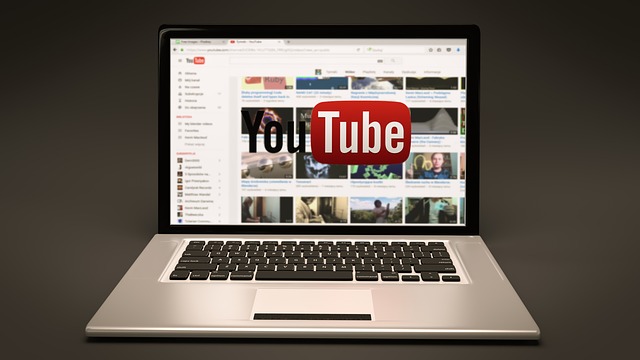
Photo by CC user atosorigin on Flickr
Whether you’re only just starting with your email marketing efforts or you’ve been doing it for years, you may not have realized yet just how important email list segmentation is (or even what it is!). But while getting someone to sign up for your emails is a very important first step, keeping them signed up AND engaged is essential to achieving that ROI everyone says is possible with email marketing.
So what is email list segmentation (ELS)?
Well the simple explanation is that ELS is the process of breaking up your entire email list into smaller groups. Now this doesn’t mean randomly selecting people to be in each group and still sending them all the same message. What it means is dividing that original list according to data you’ve collected about your subscribers and then sending them customized emails based on that info.
This probably sounds complicated, and before tools like website analytics, email analytics, online surveys or forms and even social media profiles came along it probably was. But thanks to the fact that EVERYTHING you do online can be tracked to some degree, creating targeted email campaigns is now a simple matter of choosing a segmentation formula that works for you!
So what are the benefits of ELS?
List segmentation works for one simple reason: it uses targeted email campaigns to turn a mass marketing tool into a personalized experience. Whether a customer is brand new, the very first you ever had or still a prospect they love the personal touches. And if you don’t already know that then you need to go back and learn about marketing all over again!
But besides that the most tangible and measurable benefits of email list segmentation are increased open rates, higher click-through rates, more conversions and lower unsubscribe rates. It also helps you to avoid spam filters and because your subscribers are usually more satisfied it’s probably one of the best ways to avoid email blacklists!
So when should I start segmenting my email lists?
Honestly there is no right or wrong answer to this question, but the best answer is as soon as possible! There may be times when you will want to send a single email to all of your subscribers, perhaps to mention an upgrade to your site or a special offer that everyone is eligible for.
But it’s never too late to start either, because you can always collect the data you need when you realize that you don’t have it. Obviously some information is easier to collect when a subscriber first signs up, but the beauty of email is that you can always ask for that information in a ‘get to know you’ campaign!
So how do I segment my email lists?
Unfortunately there is no one size fits all guide or tool that will help you divide your email list into different groups – no matter how big or small your email list is. There are dozens of tools you can use to collect different kinds of data, and there are dozens of different combinations of data you can use to create targeted campaigns.
And the best (worst) part? The best tools and types of data to use will vary according to any number of factors including how you send your emails (bulk email provider or dedicated server), the niche you are in (online retailer or software provider), the type of emails you send (product offers or trending articles) and even where your subscribers come from!
So what do I need before I start my targeted email campaigns?
Sending targeted emails can seem like a scary concept if you’ve never done it before. But if you start small and build (or break down!) each list slowly, then it’s a process that basically evolves on its own. And the nice thing is that the majority of email marketing tools in use today are designed to accommodate list segmentation.
The first thing you need is data about your subscribers that is linked to an email address. And don’t worry if you’re starting with virtually zero info, because you can build more detailed profiles in the future. Then you need to decide on your own segmentation formula, and finally make sure that your email sender can handle segmented lists.
So really, how do I start building my lists for targeted email campaigns?
If EVERYONE on your email list is still getting the same emails, then the best way to start is by figuring out which is the easiest group of subscribers to extract from your entire list. In fact, if you’re using a list management policy (which you should be) you may already have segmented email lists that you’re just not taking advantage of yet!
Once you’ve identified at least two different groups of subscribers (eg. people who have actually bought/downloaded anything vs those who haven’t), then start thinking about what the subscribers in each group would be most interested in. Now send two different test campaigns to a few subscribers in each group and measure your engagement rates.
If the statistics on these targeted campaigns don’t improve at all, then you need to rethink your strategy because it means that you haven’t chosen the right content, the best offer or an appropriate segment. Once you get that first segment right, then you can start looking at how to break each of those email lists into even smaller groups.
So is there anything else I need to know?
Email marketing is entirely dependent on getting your email to your subscribers inbox, and that means avoiding email blacklists. One of the most cost effective and easiest ways to do this is by using a bulk email service provider like MailChimp, AWeber, or Constant Contact. Most of these offer their own email segmentation tools, so learn to use them! Also, an email list cleaning service such as correct.email can help you get rid of the mails that are not working anymore.
Just remember that some are extremely complex and detailed, while others are as straightforward and simplistic as possible – so do a little research before hand and decide which provider offers the tools (not just their list segmentation) that will suit your email marketing needs the best!
And now all that’s left for you to do is send your emails, measure the results, adjust your campaigns as needed and then start again! Hopefully these tips will help you get the most out of your email marketing campaigns, but let us know if we’ve forgotten to mention anything important on this tech topic.









